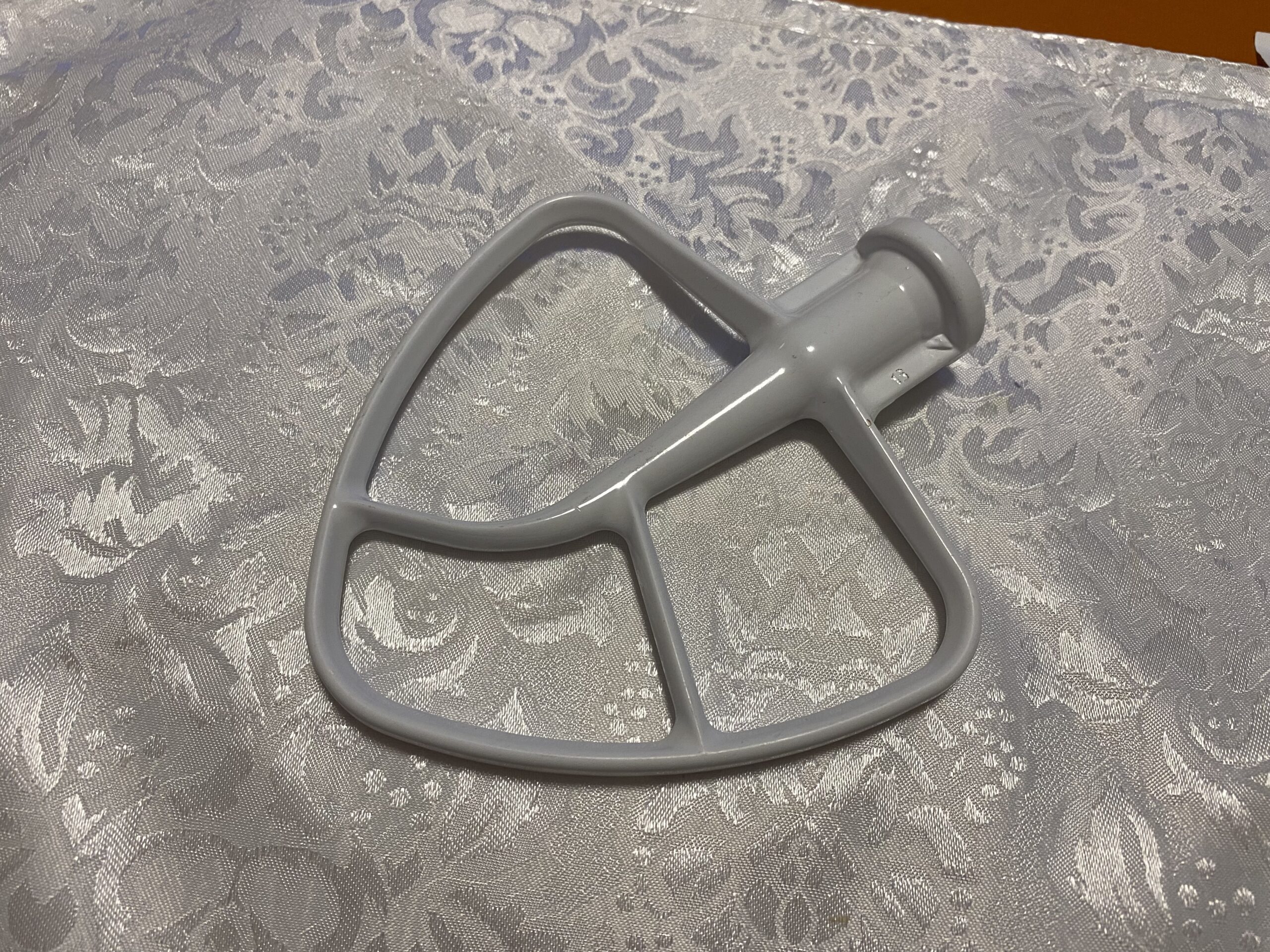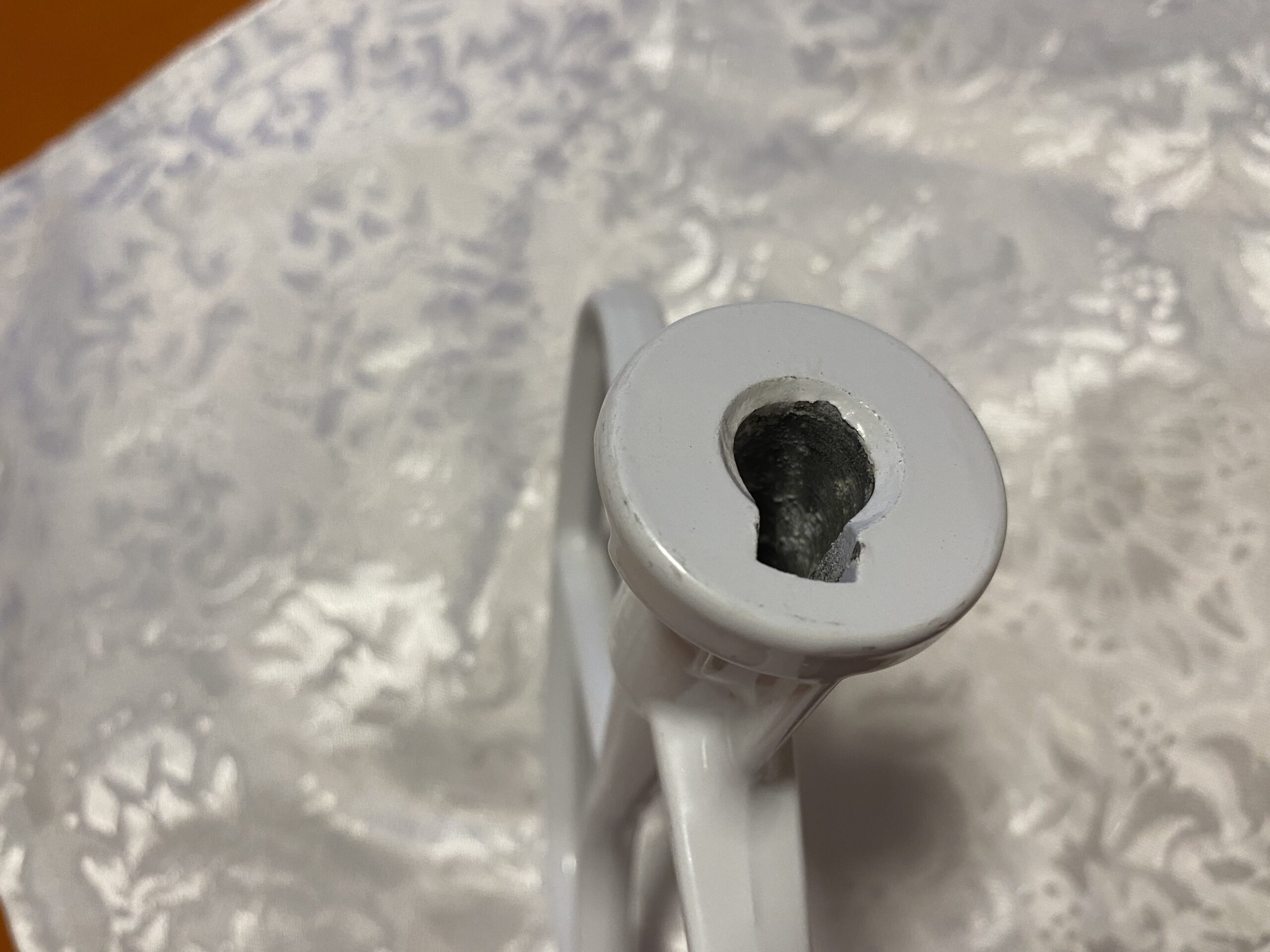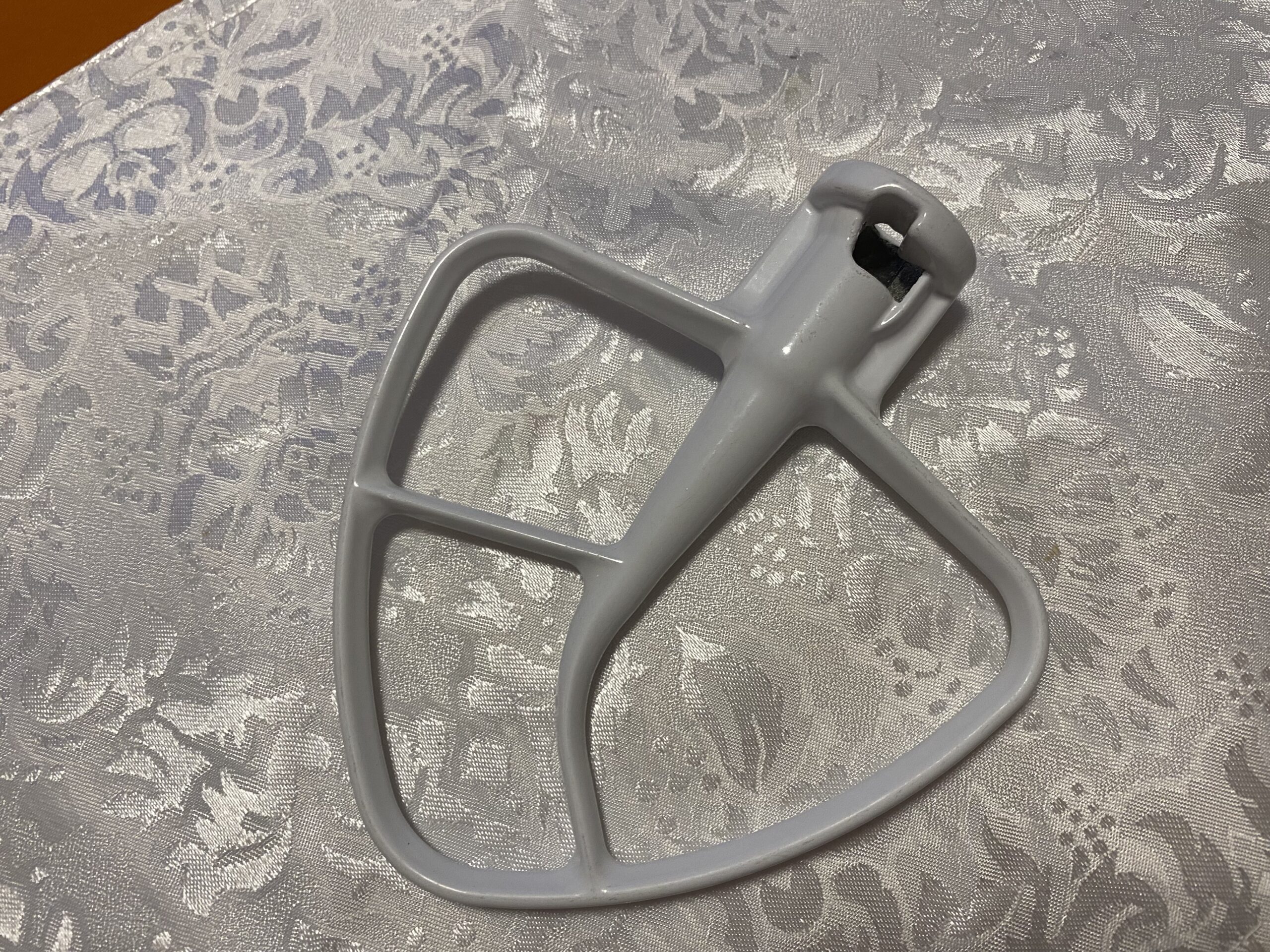KitchenAid brand white coated stand mixer paddle: 373 ppm Lead + 7 ppm Cadmium.
Sign the Petition: Link
Introduction: For those new to this website
Tamara Rubin is a Federal-award-winning independent advocate for consumer goods safety, and a documentary filmmaker. She is also a mother of Lead-poisoned children. Tamara’s sons were acutely Lead-poisoned in August of 2005. She began testing consumer goods for toxicants in 2009 and was the parent-advocate responsible for finding Lead in the popular fidget spinner toys in 2017. This year [2022], her work was responsible for three CPSC product recalls — the Jumping Jumperoo recall (June, 2022); the Lead painted NUK baby bottle recall (July, 2022); and the Leaded Green Sprouts Insulated Stainless Steel Baby Bottles (November, 2022) — and she was recently featured in an NPR story about Lead in consumer goods (August, 2022); The Guardian (December, 2022); and an upcoming article in Consumer Reports (February, 2023). Tamara uses XRF testing (a scientific method used by the U.S. Consumer Product Safety Commission) to test consumer goods for toxicants (specifically heavy metals), including Lead, Cadmium, Mercury, Antimony, and Arsenic. All test results reported on this website are science-based, accurate, and replicable. Items are tested multiple times, to confirm the test results for each component tested and reported on. Please click through to this link to learn more about the testing methodology used for the test results discussed and reported on this website.
Originally Published: October 1, 2021
Updated: December 9, 2022
KitchenAid is notorious for a history of manufacturing Lead-contaminated products — AND for denying that their products are Lead-contaminated. One of the first KitchenAid posts I ever published on social media can be found on this link – a link which also has some paddle alternatives (Lead-free options.) KitchenAid’s new stainless set is also Lead-free (I purchased a set and tested it), but please note if you buy the whisk separately (not as part of the stainless set), while the whisk “balloon” part of the attachment is stainless, it may still have the Lead-contaminated cast aluminum top attachment point; ONLY the full stainless set (sold as a set of three items and marketed as fully-stainless) have been tested and confirmed to be fully-stainless – including the top attachment point of the whisk! The stainless attachment set cannot be found on Amazon, and is sold exclusively either directly by KitchenAid or by a store that I hate as much as I hate KitchenAid — a store that I recommend (in general) avoiding shopping at, because they sell so many other Leaded items! [Here’s that link]
Several folks have asked me why the new stainless options come with a Prop 65 warning. I have addressed that concern in detail in this article – link.
Here are links to the other KitchenAid posts on this website:
- c. 2014 KitchenAid Stand Mixer Attachments – Original Overview Post
- c. 2014 KitchenAid Paddle: 333 ppm Lead
- c. 1990s Vinyl Coated KitchenAid Fridge: 1,646 ppm Lead
- c. 2010 Yellow Silicone KitchenAid Spatula: 970 ppm Lead
- KitchenAid Burnished Paddle: 445 ppm Lead
- c. 2007 KitchenAid Burnished Paddle: 607 ppm Lead
- c. 2006 Dough Hook: 698 ppm Lead
- c. 2006 Burnished Metal Paddle: 644 ppm Lead
- KitchenAid Whisk Attachment: 274 ppm Lead
- c. 2015 KitchenAid Dough Hook: 315 ppm Lead
- c. 1994 Kitchen Aid Paddles: 600 to 800 ppm Lead
- 2019 Red Silicone KitchenAid Spatulas: 11 ppm Lead
- Black Ceramic Liner of KitchenAid Slow Cooker: 386 ppm Lead
FULL XRF Test Results for the cast aluminum white coated paddle pictured
60-second reading
Metals noted in red are considered toxic to humans
- Lead (Pb): 373 +/- 13 ppm
- Cadmium (Cd): 7 +/- 3 ppm
- Mercury (Hg): non-detect
- Bromine (Br): 11 +/- 1 ppm
- Chromium (Cr): 237 +/- 124 ppm
- Manganese (Mn): 438 +/- 81 ppm
- Iron (Fe): 7,149 +/- 149 ppm
- Nickel (Ni): 375 +/- 35 ppm
- Copper (Cu): 15,800 +/- 200 ppm
- Zinc (Zn): 10,700 +/- 200 ppm
- Titanium (Ti): 289,200 +/- 2,400 ppm
- Zirconium (Zr): 368 +/- 8 ppm
- Tin (Sn): 219 +/- 7 ppm
- Barium (Ba): 37 +/- 17 ppm
- Platinum (Pt): 94 +/- 30 ppm
- no other metals detected
Some additional reading that may be of interest:
- A link discussing the testing methodology used here on this website
- A menu with buttons to lots of different categories of information that can be found here on this website
- A link to my documentary feature film on childhood Lead poisoning
- The short video that shows you how to search this site
- Things you can test at home with a LeadCheck swab
- Things you really cannot test at home (better tested with XRF technology)
As always, please let me know if you have any questions. Thank you for reading and thank you for sharing my posts.
Tamara Rubin
#LeadSafeMama
Never Miss an Important Article Again!
Join our Email List






Thank you for all the work that you do! Is there a stand mixer that you recommend? Would hand mixers be less likely to contain lead/cadmium? Does Kitchen Aid ever respond to your results?
I am working on a post about this! Stand by!
Hi Tamara! Did you post this article about a safe stand mixer or hand mixer? I’ve been searching the site trying to find a replacement! I don’t want to support kitchen aid by buying the stainless steel set.
I had one but I removed it because I was no longer comfortable with the brand. Sorry about the confusion. I like the Ace Blender products but I no longer recommend that brand specifically anymore because of ethical considerations as well.
T
Ugh, thanks foe the reply! I refuse to support kitchen aid further by buying their stainless steel attachments but don’t know what else is safe…
You often can get stainless steel attachments for Kitchenaid!
Are there any dishes or tools that start out lead free and then deteriorate say from dishwasher?
That’s not a thing. Either they have XRF detectable Lead or they do not. If they have XRF detectable Lead they can deteriorate in the dishwasher and the Lead can become more bioavailable over time. This post discusses that:https://tamararubin.com/topics/does-vintage-and-new-functional-pottery-and-dishware-have-unsafe-levels-of-lead/
Tamara
I have a vintage Kitchen Aid mixer with stainless bowl, it’s probably 1960s. Still works! Do you think they make stainless attachments that fit it? Or does it make most sense to just get a new lead free option?
I think they probably do make stainless attachments that fit it. It’s worth giving a call to see!
Tamara
Would love to hear recommendations for safe compatible attachments if you already have a KitchenAid Stand Mixer!
just updated this post – but it is also discussed in the overview post for this brand.
Amazing, thank you so much for the work you do to keep our families safer!
Do you have suggestions for other brands to use for mixers?
I too am hunting for this info. I get a 404 error when trying to access her Lead Safe Appliances page at https://tamararubin.com/category/appliances/
There’s no replacement for my KitchenAid because it’s a 6qt 16 year old device.
I just updated the link in your comment: https://tamararubin.com/category/appliances/
Where are you finding the dud link to that appliance page (if you can let me know I will update it).
Thanks!
I read one of your posts that recommended another brand (this one actually lead free!) that sells attachments compatible with KitchenAid, but I can’t find the post anymore. Could you please share the link? Thank you!
I may have missed this in the post, sorry if I did…. at what part on the paddle did you take this measurement? On the general outside of it? Or at the top where it inserts into the machine?
Thank you
These readings are through the white coating. The levels are consistent everywhere on the paddles. It is the substrate that is positive for Lead (the substrate that becomes exposed when the surface coating chips.)
So using the paddle doesn’t really get lead in the food? Unless the what material is chipped then that is the only way lead can get in.